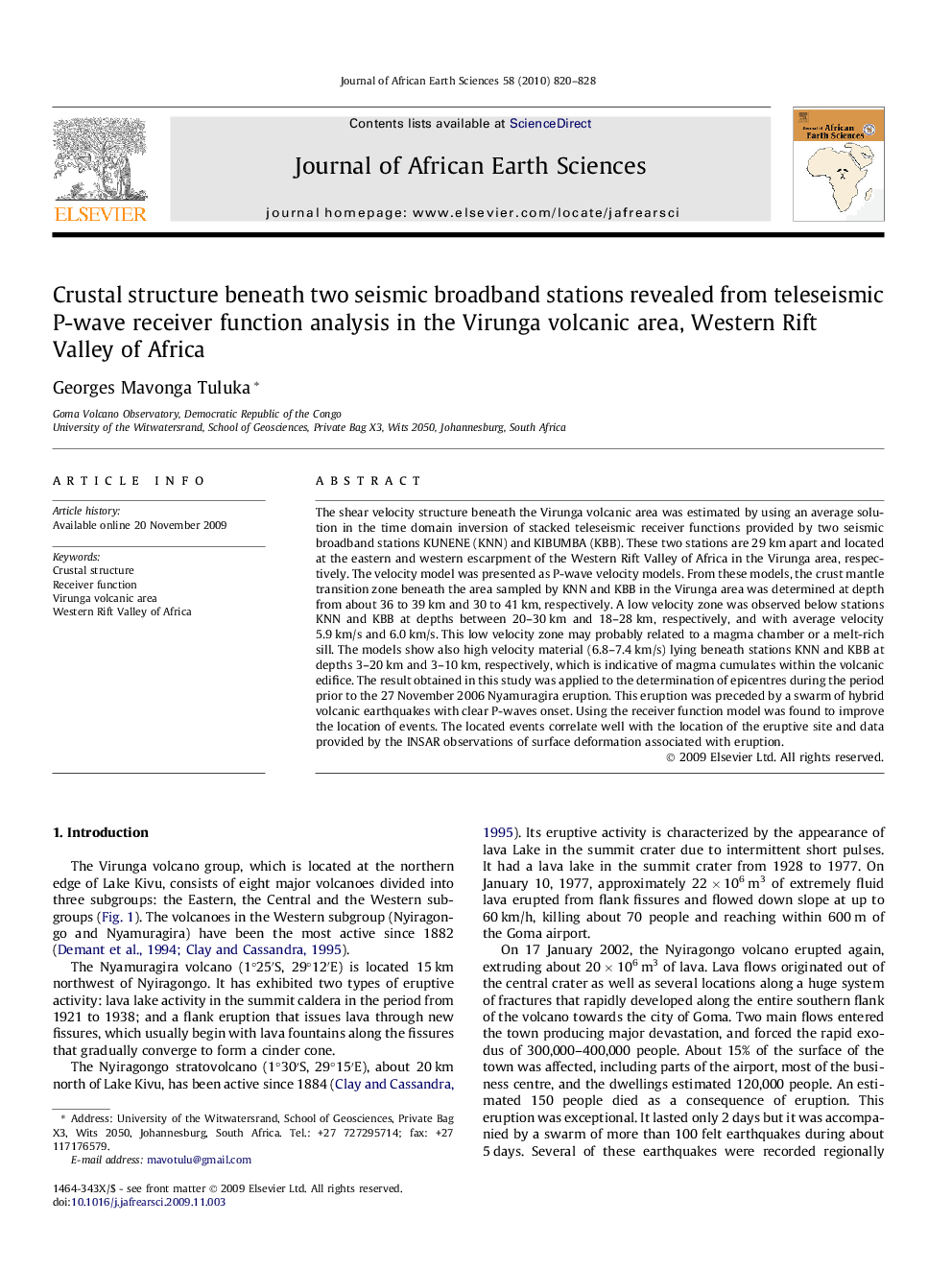| Article ID | Journal | Published Year | Pages | File Type |
|---|---|---|---|---|
| 4729270 | Journal of African Earth Sciences | 2010 | 9 Pages |
The shear velocity structure beneath the Virunga volcanic area was estimated by using an average solution in the time domain inversion of stacked teleseismic receiver functions provided by two seismic broadband stations KUNENE (KNN) and KIBUMBA (KBB). These two stations are 29 km apart and located at the eastern and western escarpment of the Western Rift Valley of Africa in the Virunga area, respectively. The velocity model was presented as P-wave velocity models. From these models, the crust mantle transition zone beneath the area sampled by KNN and KBB in the Virunga area was determined at depth from about 36 to 39 km and 30 to 41 km, respectively. A low velocity zone was observed below stations KNN and KBB at depths between 20–30 km and 18–28 km, respectively, and with average velocity 5.9 km/s and 6.0 km/s. This low velocity zone may probably related to a magma chamber or a melt-rich sill. The models show also high velocity material (6.8–7.4 km/s) lying beneath stations KNN and KBB at depths 3–20 km and 3–10 km, respectively, which is indicative of magma cumulates within the volcanic edifice. The result obtained in this study was applied to the determination of epicentres during the period prior to the 27 November 2006 Nyamuragira eruption. This eruption was preceded by a swarm of hybrid volcanic earthquakes with clear P-waves onset. Using the receiver function model was found to improve the location of events. The located events correlate well with the location of the eruptive site and data provided by the INSAR observations of surface deformation associated with eruption.
